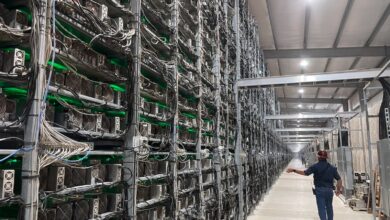Cryptocurrency Mining: Fueling the Blockchain Revolution
The Art of Crypto Mining: Uncovering its Intricacies

Understanding Cryptocurrency Mining: Unraveling the Complexities

Cryptocurrency mining, a cornerstone of the blockchain world, is the process by which transactions are verified and added to the public ledger, known as the blockchain. It’s the mechanism through which new coins are created and the network is secured. But how does this intricate process actually work?
The Basics of Mining
At its core, mining involves solving complex mathematical problems that validate and secure transactions on a blockchain network. Let’s take Bitcoin as an example. Transactions made in Bitcoin are bundled into blocks, and miners compete to solve a cryptographic puzzle associated with these blocks.
Proof of Work (PoW)
Most cryptocurrencies, including Bitcoin, utilize a consensus mechanism called Proof of Work (PoW). Miners compete to solve the puzzle by using computational power to find a specific hash value that meets certain criteria. This involves making numerous calculations until the correct value is found, a process that requires substantial computational resources.
The Mining Process
Transaction Verification:
Miners collect pending transactions and verify their validity.
Creating a Block:
Verified transactions are grouped together to form a block.
Finding the Nonce:
Miners start working on finding the nonce (a number used only once) that, when combined with the block’s data, produces a hash that meets the network’s criteria.
Solving the Puzzle:
Miners iterate through different nonces until one finally produces the required hash.
Adding the Block:
The successful miner broadcasts the solution to the network, and if validated by other nodes, the block is added to the blockchain, and the miner is rewarded with newly minted coins and transaction fees.
The Challenges and Rewards
Mining is not without its challenges. As more miners join the network, the competition intensifies, requiring more computational power and energy consumption. This has led to concerns about its environmental impact.
However, successful miners are rewarded for their efforts. In addition to newly created coins, they also earn transaction fees associated with the transactions included in the block they mined. This incentive system encourages miners to continue securing the network.
Evolution and Alternatives
To address concerns about energy consumption, some cryptocurrencies are exploring alternative consensus mechanisms. Proof of Stake (PoS), for instance, doesn’t rely on computational power but rather on participants’ stakes in the network.
Conclusion
Cryptocurrency mining is a fundamental aspect of blockchain technology, ensuring transaction security and network decentralization. As the landscape evolves, so do the methods and mechanisms, aiming for greater efficiency and sustainability in the ever-expanding world of cryptocurrencies.




